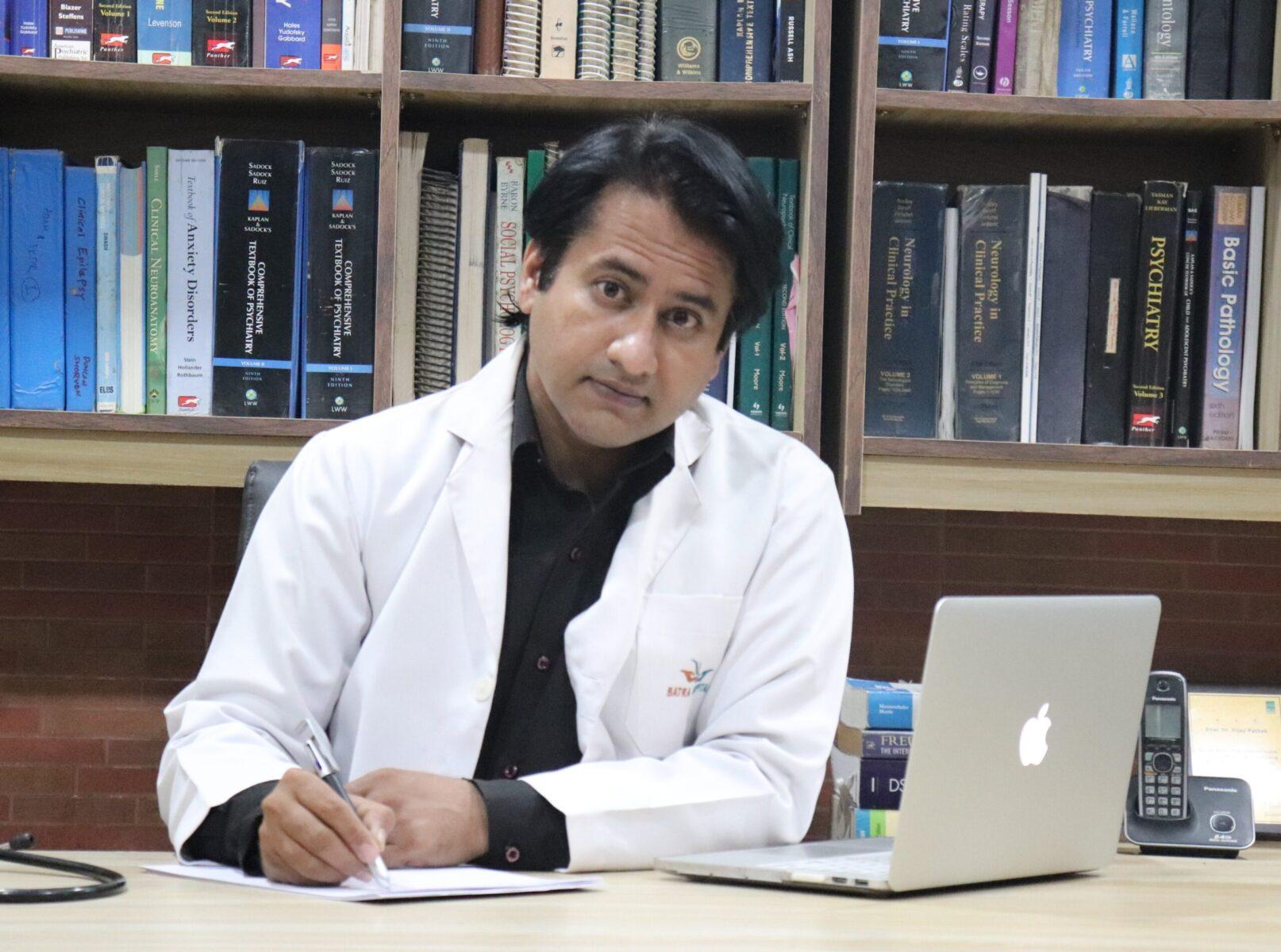Addictions

Addiction is defined as a chronic, relapsing disorder characterized by compulsive drug seeking, continued use despite harmful consequences, and long-lasting changes in the brain. It is considered both a complex brain disorder and a mental illness. Addiction is the most severe form of a full spectrum of substance use disorders, and is a medical illness caused by repeated misuse of a substance or substances. Use of and addiction to alcohol, nicotine, and illicit drugs cost the Nation more than $740 billion a year related to healthcare, crime, and lost productivity. In 2016, drug overdoses killed over 63,000 people in America, while 88,000 died from excessive alcohol use. Tobacco is linked to an estimated 480,000 deaths per year.
How are substance use disorders categorized?
NIDA uses the term addiction to describe compulsive drug seeking despite negative consequences. However, addiction is not a specific diagnosis in the fifth edition of The Diagnostic and Statistical Manual of Mental Disorders (DSM-5)—a diagnostic manual for clinicians that contains descriptions and symptoms of all mental disorders classified by the American Psychiatric Association (APA).
In 2013, APA updated the DSM, replacing the categories of substance abuse and substance dependence with a single category: substance use disorder, with three sub classifications—mild, moderate, and severe. The symptoms associated with a substance use disorder fall into four major groupings: impaired control, social impairment, risky use, and pharmacological criteria (i.e., tolerance and withdrawal).
The new DSM describes a problematic pattern of use of an intoxicating substance leading to clinically significant impairment or distress with 10 or 11 diagnostic criteria (depending on the substance) occurring within a 12-month period. Those who have two or three criteria are considered to have a “mild” disorder, four or five is considered “moderate,” and six or more symptoms, “severe.” The diagnostic criteria are as follows:
- The substance is often taken in larger amounts or over a longer period than was intended.
- There is a persistent desire or unsuccessful effort to cut down or control use of the substance.
- A great deal of time is spent in activities necessary to obtain the substance, use the substance, or recover from its effects.
- Craving, or a strong desire or urge to use the substance, occurs.
- Recurrent use of the substance results in a failure to fulfill major role obligations at work, school, or home.
- Use of the substance continues despite having persistent or recurrent social or interpersonal problems caused or exacerbated by the effects of its use.
- Important social, occupational, or recreational activities are given up or reduced because of use of the substance.
- Use of the substance is recurrent in situations in which it is physically hazardous.
- Use of the substance is continued despite knowledge of having a persistent or recurrent physical or psychological problem that is likely to have been caused or exacerbated by the substance.
- Tolerance, as defined by either of the following:
- A need for markedly increased amounts of the substance to achieve intoxication or desired effect
- A markedly diminished effect with continued use of the same amount of the substance.
- Withdrawal, as manifested by either of the following:
- The characteristic withdrawal syndrome for that substance (as specified in the DSM-5 for each substance).
- The use of a substance (or a closely related substance) to relieve or avoid withdrawal symptoms.
What is drug use, misuse, and addiction?
Drug use refers to any scope of use of illegal drugs: heroin use, cocaine use, tobacco use. Drug misuse is used to distinguish improper or unhealthy use from use of a medication as prescribed or alcohol in moderation. These include the repeated use of drugs to produce pleasure, alleviate stress, and/or alter or avoid reality. It also includes using prescription drugs in ways other than prescribed or using someone else’s prescription. Addiction refers to substance use disorders at the severe end of the spectrum and is characterized by a person’s inability to control the impulse to use drugs even when there are negative consequences. These behavioral changes are also accompanied by changes in brain function, especially in the brain’s natural inhibition and reward centers. The use of the term addiction corresponds roughly to the DSM definition of substance use disorder. The DSM does not use the term addiction. The uses of term misuse, as it is roughly equivalent to the term abuse. Substance abuse is a diagnostic term that is increasingly avoided by professionals because it can be shaming, and adds to the stigma that often keeps people from asking for help. Substance misuse suggests use that can cause harm to the user or their friends or family.
What is the difference between physical dependence, tolerance, and addiction?
Physical dependence can occur with the regular (daily or almost daily) use of any substance, legal or illegal, even when taken as prescribed. It occurs because the body naturally adapts to regular exposure to a substance (e.g., caffeine or a prescription drug). When that substance is taken away, (even if originally prescribed by a doctor) symptoms can emerge while the body re-adjusts to the loss of the substance. Physical dependence can lead to craving the drug to relieve the withdrawal symptoms. Tolerance is the need to take higher doses of a drug to get the same effect. It often accompanies dependence, and it can be difficult to distinguish the two. Addiction is a chronic disorder characterized by drug seeking and use that is compulsive, despite negative consequences.
How do drugs work in the brain to produce pleasure?
Nearly all addictive drugs directly or indirectly target the brain’s reward system by flooding the circuit with dopamine. Dopamine is a neurotransmitter present in regions of the brain that regulate movement, emotion, cognition, motivation, and reinforcement of rewarding behaviors. When activated at normal levels, this system rewards our natural behaviors. Overstimulating the system with drugs, however, produces effects which strongly reinforce the behavior of drug use, teaching the person to repeat it.
Is drug use or misuse a voluntary behavior?
The initial decision to take drugs is generally voluntary. However, with continued use, a person’s ability to exert self-control can become seriously impaired. Brain imaging studies from people addicted to drugs show physical changes in areas of the brain that are critical for judgment, decision-making, learning, memory, and behavior control. Scientists believe that these changes alter the way the brain works and may help explain the compulsive and destructive behaviors of a person who becomes addicted.
Can addiction be treated successfully?
Yes. Addiction is a treatable, chronic disorder that can be managed successfully. Research shows that combining behavioral therapy with medications, if available, is the best way to ensure success for most patients. The combination of medications and behavioral interventions to treat a substance use disorder is known as medication-assisted treatment. Treatment approaches must be tailored to address each patient’s drug use patterns and drug-related medical, psychiatric, environmental, and social problems. Relapse rates for patients with substance use disorders are compared with those suffering from hypertension and asthma. Relapse is common and similar across these illnesses (as is adherence to medication). Thus, drug addiction should be treated like any other chronic illness, with relapse serving as a trigger for renewed intervention.
Does relapse to drug use mean treatment has failed?
No. The chronic nature of addiction means that relapsing to drug use is not only possible but also likely. Relapse rates are similar to those for other well-characterized chronic medical illnesses such as hypertension and asthma, which also have both physiological and behavioral components. Relapse is the return to drug use after an attempt to stop. Treatment of chronic diseases involves changing deeply imbedded behaviors. Lapses back to drug use indicate that treatment needs to be reinstated or adjusted, or that alternate treatment is needed. No single treatment is right for everyone, and treatment providers must choose an optimal treatment plan in consultation with the individual patient and should consider the patient’s unique history and circumstance.
How many people die from drug use?
The CDC reports that in 2016, the rate of overdose deaths was more than three times the rate in 1999. The pattern of drugs involved in drug overdose deaths has changed in recent years. The rate of drug overdose deaths involving synthetic opioids other than methadone doubled from 3.1 per 100,000 in 2015 to 6.2 in 2016, with about half of all overdose deaths being related to the synthetic opioid fentanyl, which is cheap to get and added to a variety of illicit drugs. For more information about drug overdose rates, please go to cdc.gov/drugoverdose/data.

I Can Help
Dr Vijay PathakMBBS MD Psychiatry (CIP RANCHI)Positive Psychology & Psychiatry Practitioner Since 2005Dr. Vijay Pathak is a well-known Consultant and practicing psychiatrist in delhi. After completion of MBBS from Sardar Patel Medical College, Bikaner (University of Rajasthan), he worked in different specialties as Neurology, Neurosurgery, Plastic Surgery, Urology as resident Doctor. The grossly unnoticed psychological trauma among patients tilted his interest in Mental Health and he obtained an MD in Psychiatry from the legendry Central Institute of Psychiatry ,Ranchi.. He then worked in the Department of Psychiatry of RML Hospital New Delhi as Senior Resident for three years and as Research Officer for a further one year. During this period he also gained experience in the Drug Dependence TreatmentHis areas of specialization include adult psychiatry (bipolar disorders, schizophrenia and anxiety disorders), child and adolescent psychiatry (especially ADHD), de-addiction (alcohol and substance abuse) and community psychiatry. One of the Top Psychiatrist in Delhi Dr. Pathak is known to be not only effective but also compassionate with his patients, as a result of which they trust him and connect well with him.Dr. Vijay Pathak, also termed as one of the Best Psychiatrist in Delhi by many of his patients in reviews , has extensive training and experience in his profession and is well-versed in the segments of psychopathology, psychopharmacology, neuroscience, clinical genetics, psychological therapies, research methodology, and statistics.
Dr Vijay Pathak Consultant Psychiatrist in Delhi can be found on google by following tags Psychiatrist In Delhi, Best Psychiatrist in delhi, Top Psychiatrist in Delhi, Delhi Psychiatrist, Psychiatrist in Rajouri Garden,Best Psychiatrist in Rajouri Garden, Psychiatrist in Hari Nagar, Psychiatrist in Tagore Garden, Psychiatrist in Raja Garden, Psychiatrist in Central Delhi, Psychiatrist in Ramesh Nagar, Psychiatrist in Moti Nagar, Psychiatrist in Shadipur, Psychiatrist Near Me, Psychiatrist in Karol Bag, Psychiatrist in Rajendra Nagar, Psychiatrist in Punjabi Bag, Psychiatrist in Paschim Vihar, Psychiatrist in Vikaspuri, Best Psychiatrist in uttam nagar, Best Psychiatrist in subhash nagar, Best Psychiatrist indwarka, Best Psychiatrist in nazafgarh, Best Psychiatrist in bali nagar, Best Psychiatrist in patel nagar, Best Psychiatrist in rani bagh, Best Psychiatrist in west delhi, Best Psychiatrist in tilak nagar, Best Psychiatrist innavada, Best Psychiatrist in delhi cantt, Best Psychiatrist in pitampura, Best Psychiatrist in rohini, Best Psychiatrist in ashok vihar